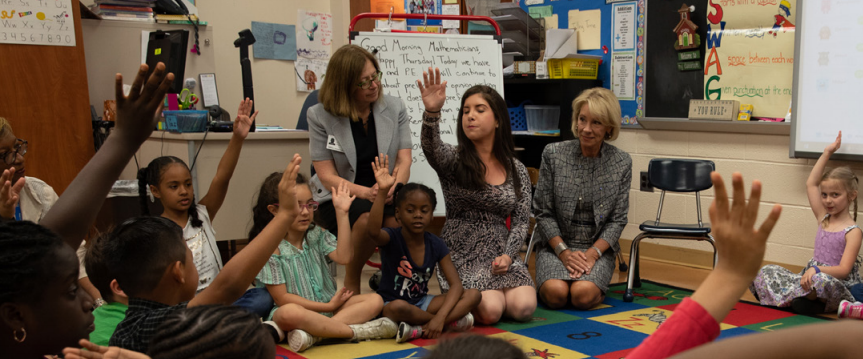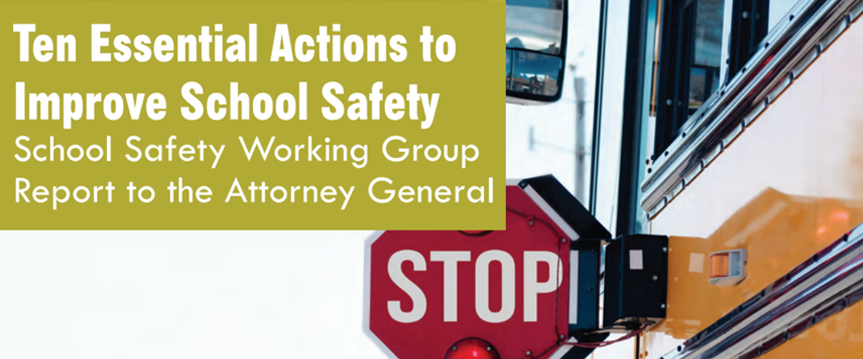Educate to Mitigate
Every superintendent and administrator advocates for safe, secure, and peaceful schools. The Louisiana Center for Safe Schools provides school communities and their school safety partners with quality information and resources by identifying and promoting strategies, promising practices, and programs that support safe schools for all students as part of the total academic mission. After all, Education is the key to opportunity and advancement. Likewise, providing safe and secure learning environments are the core foundation of learning and engagement.
When a school-based emergency occurs, school personnel respond immediately. They provide first aid, notify response partners, and provide instructions before first responders arrive. They also work with community partners and governmental organizations, having responsibilities identified in the school EOPs, to provide a cohesive, coordinated response to events as they unfold. Community partners include first responders - law enforcement, fire service, emergency medical service, and emergency management personnel - as well as public and mental health entities. In conjunction with the U.S. Department of Homeland Security, U. S. Department of Education, Louisiana Department of Education, Louisiana Department of Public Safety Services, and Louisiana State Police, the Governor’s Office of Homeland Security and Emergency Preparedness set out to create and maintain a School Safety Program to build and/or strengthen capacity at the district and local levels for all-hazards emergency operations planning. Our pursuit is to help ensure school and campus safety and the appropriate response from on-scene staff in the event of an emergency or disaster.
The initiative helps ensure school and campus safety and the appropriate response from on-scene staff in the event of an emergency or disaster. Although many already have High-Quality EOPs in place, this is a chance to improve upon the existing plan you have and help support those school districts and private schools that do not yet have High-Quality EOP.
National Resources
CISA: K-12 School Security Guide and Companion Products
K-12 School Security Guide provides a comprehensive doctrine and systems-based methodology to support schools in conducting vulnerability assessments and planning to implement layered physical security elements across K–12 districts and campuses. The primary focus will be on protection and mitigation measures and strategies schools should consider in their broader school safety enterprise. The guide is designed and organized for local education agencies to employ in conjunction with the K-12 School Security Assessment Tool (SSAT), a web-based tool that provides further guidance on school physical security planning and implementation. Together, this guide and the companion tool outline action-oriented security practices and options for consideration across the K-12 school community.


COPS: 10 Essential Actions to Improve School Safety
In this report, the COPS Office's Safety Working Group identifies 10 essential things schools, school districts, and law enforcement agencies can do to mitigate and prevent school violence as well as to facilitate swift and effective law enforcement assistance when it is necessary.
National Center on Safe Supportive Learning Environments
The National Center on Safe Supportive Learning Environments (NCSSLE) offers information and technical assistance to States, districts, schools, institutions of higher learning, and communities focused on improving school climate and conditions for learning. We believe that with the right resources and support, educational stakeholders can collaborate to sustain safe, engaging, and healthy school environments that support student academic success.


Emergency Management Virtual Toolkit
Student and campus health and safety is more than just a trending topic. It is one of many responsibilities that school and school district administrators and staff take on when they make a commitment to be educational stewards. Local education agencies (LEAs) play an important role in ensuring that educational facilities are prepared to prevent, protect, mitigate, respond to, and recover from emergencies caused by threats and hazards, both natural and man-made. LEAs are in a key position to engage students, faculty, and staff in emergency management planning activities so that the whole school and campus community is better prepared and more resilient in the event of an emergency.
National Center for Education Statistics
The National Center for Education Statistics (NCES) is the primary federal entity for collecting and analyzing data related to education in the U.S. and other nations. NCES is located within the U.S. Department of Education and the Institute of Education Sciences. NCES fulfills a Congressional mandate to collect, collate, analyze, and report complete statistics on the condition of American education; conduct and publish reports; and review and report on education activities internationally.


Sextortion: Protecting Youth Through the School Emergency Operations Plan
Ensuring that students come to school prepared to learn involves comprehensive emergency management planning that supports students in all settings and at all times. This includes protecting students as they participate in online spaces. As Internet communication technology continues to advance, so do opportunities for criminals to entice, exploit, and victimize children online. The prevailing use of mobile devices and the popularization of mobile applications, particularly social media, have given rise to new types of Internet-based crimes, including child pornography, identity theft, illegal access to data, and sextortion.
Improving School Safety Through Bystander Reporting
Schools provide the foundation for our nation’s success. They play a vital role not just in student learning, but also in the development of children’s social, emotional, and interpersonal skills. To ensure the academic success and emotional wellbeing of all students, schools must foster a safe and nurturing environment where students feel empowered to express their concerns and where student voices are heard.
